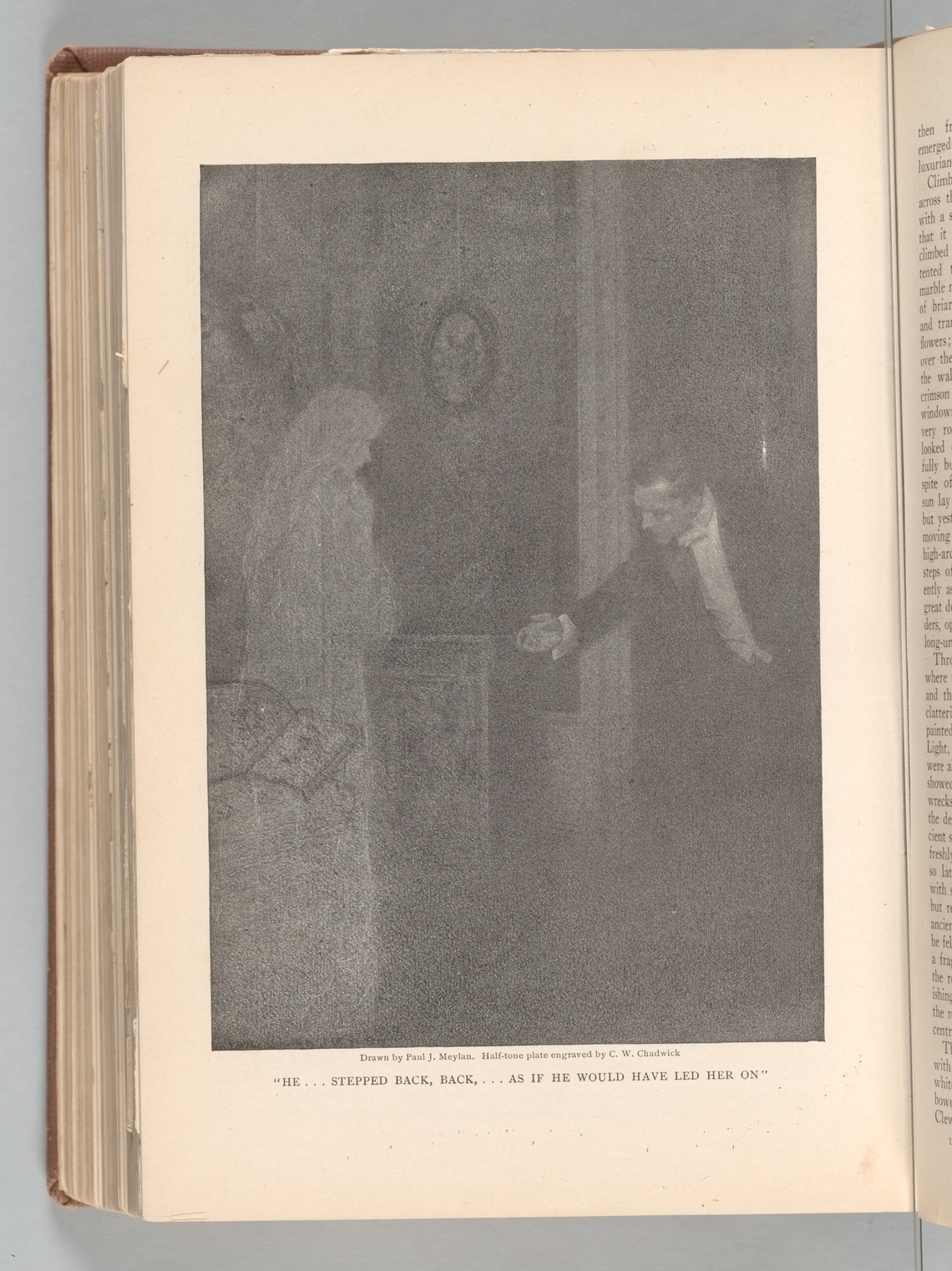"His House Forlorn"
-
As we have already seen in Item 2, illustrations often served as a significant indicator of story genre and content, essentially crying out “Read Me.” Lucia Chamberlin is identified in WorldCat as the author or co-author of a number of novels, yet even there no dates are provided for her life. In “His House Forlorn,” she managed to create a powerful ghost story rooted in questions of gender and injustice. A man visiting his inherited family estate is directly confronted by the ghost of a young woman who had been kidnapped by his grandfather and imprisoned there. Unwilling to comply with his designs on her, she had escaped by the only means available: committing suicide. The ghost reenacts this suicide for the heir of the estate.
Century Illustrated Monthly Magazine (1870-1930) was, as per scholar Mark J. Noonan, “the most influential genteel magazine of the day.”
The limitations of Harriot Fansler’s prescriptive approach to fictional genres (in her Types of Prose Narratives) becomes apparent when she provides advice regarding the genre that she designates as “the modern ghost story.” She classes this genre within a larger narrative type: “the psychological weird tale.” Within this larger type, she assigns the ghost story a basic entry-level status in terms of complexity. She suggests: “For your first attempt at this type of narrative [i.e., the psychological weird tale], you might try the modern ghost story, and later, when more practised, the delicate psychological analysis of conscience” (401).
Introduction
- Label
- "His House Forlorn"
- Author
- Lucia Chamberlin
- Original Publication Date
- 1909
- New Publication Date
- 1909
- Publisher
- Century Illustrated Monthly Magazine
- Location
- Butler Stacks
- Case
- 4
